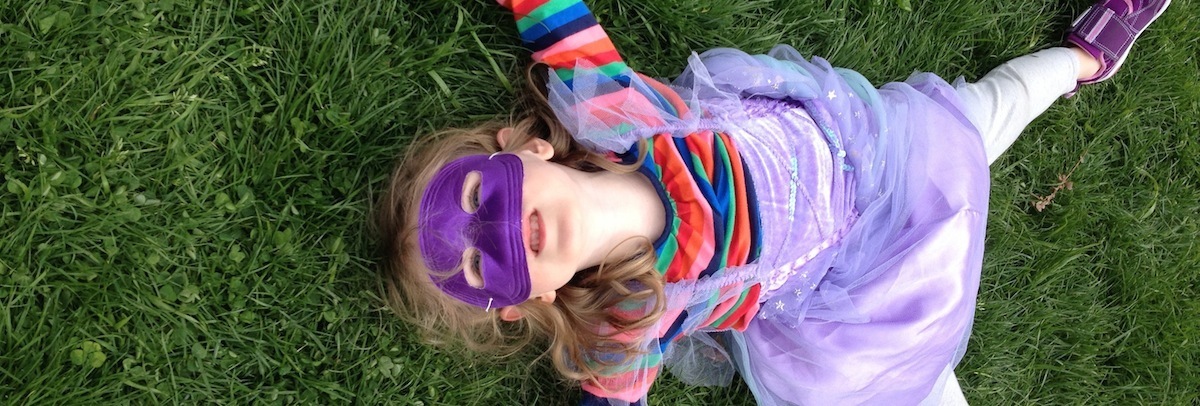Going on a Bell Hunt
-
Age: 3 to 5
-
Time: <30 min
-
Materials: 1 bell per child
- Skills: Imagination, Gross Motor, Focus & Self Control
"Don't" Ring the Bell Activity for Kids
Early on in my training, a colleague told me about a Montessori game with bells, but it got tucked, unused, in my "teacher toolbox." Years later, I read about it again in Ellen Galinsky's Mind in the Making, a book that has become a go-to guide on early childhood learning to both the parent and educator in me. Here’s the gist: Each kid gets her own bell to hold as she moves around. Once the game starts, she needs to keep moving and make sure the bell does not ring, helping to build self control. If her bell sounds, she is out or has to restart the round. Kids adjust the level challenge for themselves based on where, how fast, and how wildly they move.
It sounded good to us, so we experimented with this game as a family and in our local classes. We found that kids liked it well enough, but were never lost in the fun the way we had hoped. Then, we decided to tinker with it, and that made all the difference. What were the missing secret ingredients? A storyline, and equal doses of quiet and crazy. It quickly became intoxicating to both the kids and we adults.
The Guide
- Get some bells: We love to use school bells, but you can also use cow, sleigh or other bells. Whichever, get one per kid and one for you.
- Choose a narrative: We love the animal hunt. Rather than just tell kids to be quiet so they keep from getting “out," we start each round of the game by asking what animal could be "hiding behind that bush," "waiting just over that hill" or "sitting up in that tree." Whether kids imagine a grey squirrel, a jungle lion or a dinosaur, a hunt for said creature frames the game.
- Play along with the kids: Bells in hand, pretend to walk slowly towards the animal in your best hunter stances, being as careful as you can NOT to let your bells make a sound. Remind kids that and that you MUST be quiet if you want to sneak up on the animal and not frighten it away. Once you got close to the bush, hill, tree, etc, the leader shouts, "Uh oh, here it comes! Ring your bells!" Everyone rings their bells as loudly as they can and runs around. About a minute later, repeat. It is pure fun, and kids get better and better at the quiet parts.
- Winners and losers? It's been my experience that kids under 6 just like to keep playing and care little about who actually wins. And, the game itself if more challenging for them, so it seems just playing and having fun is enough. For kids over 6, they will likely enjoy a game with winners and losers, and higher stakes will make them more likely to focus. Each round, whoever allows her bell to ring is "out" until the end of that round. The child who is able to hold the bell silent longer than any other player wins the game.
Why is this activity great for kids?
This seemingly simple game is a powerful way for kids to develop critical skills. In this game, learning to actively suppress the urge to ring that bell is a challenge that should not be underestimated. Kids, especially kids ages 3 to 5, really respond to the animal hunt scenario, far better able to restrain themselves in the name of a hunt than just to win a game. This variant still helps kids build self control, even though it also honors their propensity and desire to be loud, excited, and lively. Letting loose is something kids are rarely encouraged to do, particularly when most of their day is structured, surrounded by adults for so many of whom loud and lively have lost their charm.
The bell game also requires one to pay attention not only to what is going on around him, but also what is going on with his own body. To play this game, a child must act and move mindfully, and he gets immediate feedback to correct his movement, enhancing the learning. Keeping the bell quiet requires balance, responsive foot placement, pretty careful control of trunk, hands and arms, plus a good grasp of the bell itself. No matter how coordinated your child, he or she can benefit from this work out of both gross motor and fine motor skills. All kids can find the appropriate level of physical challenge by taking on more or less challenging terrain at faster or slower speeds.


